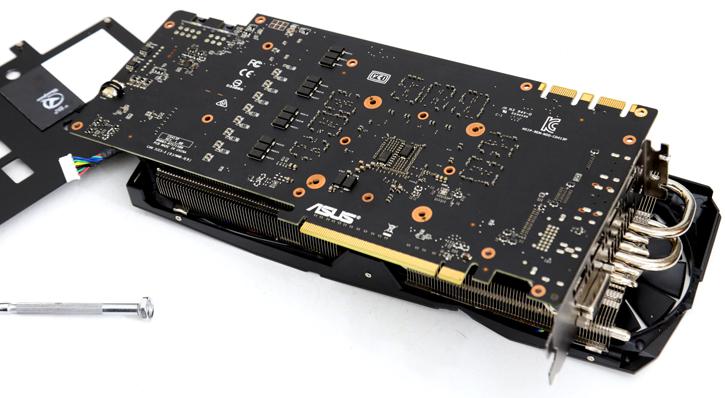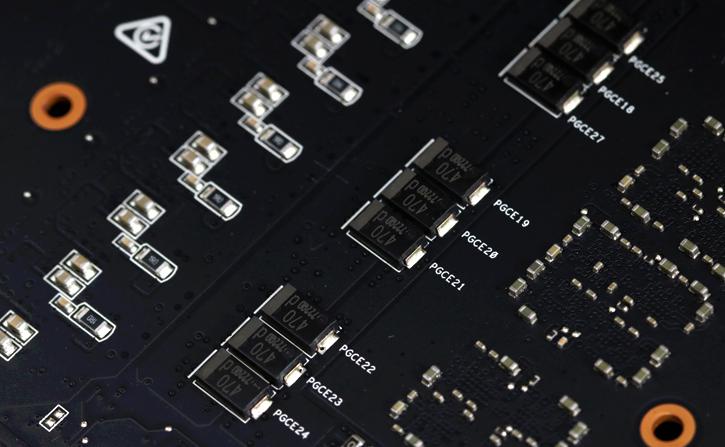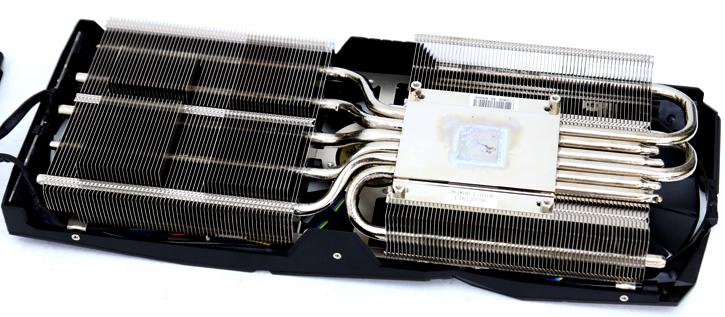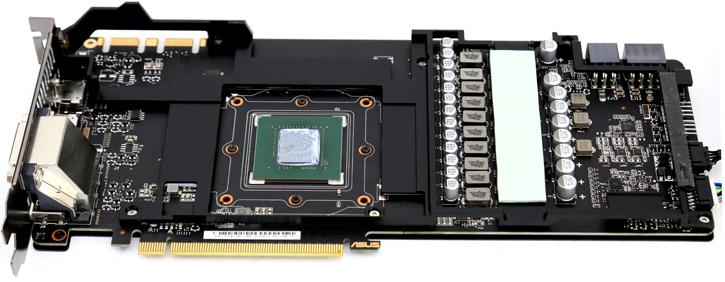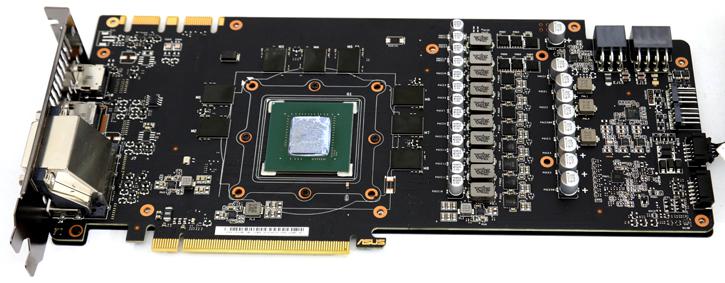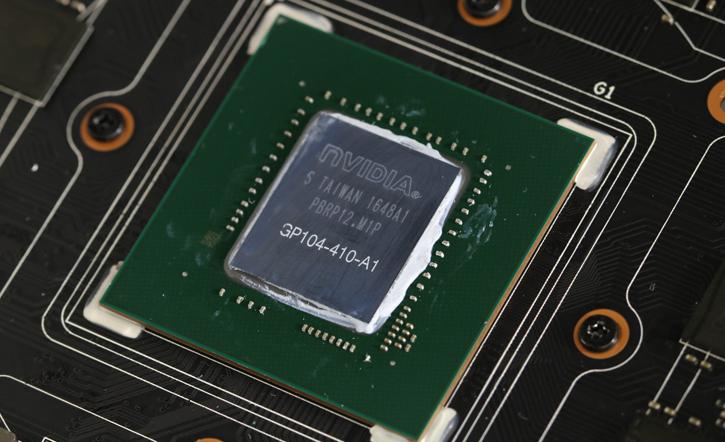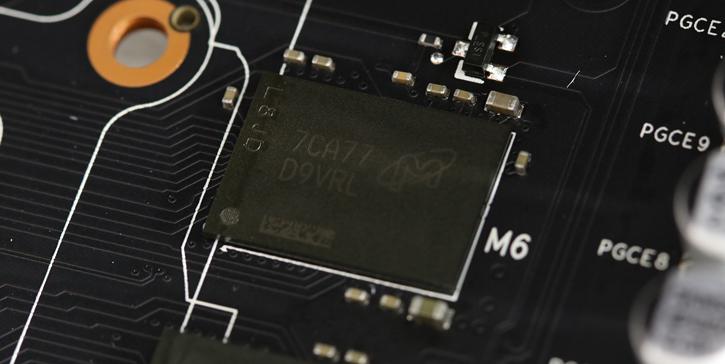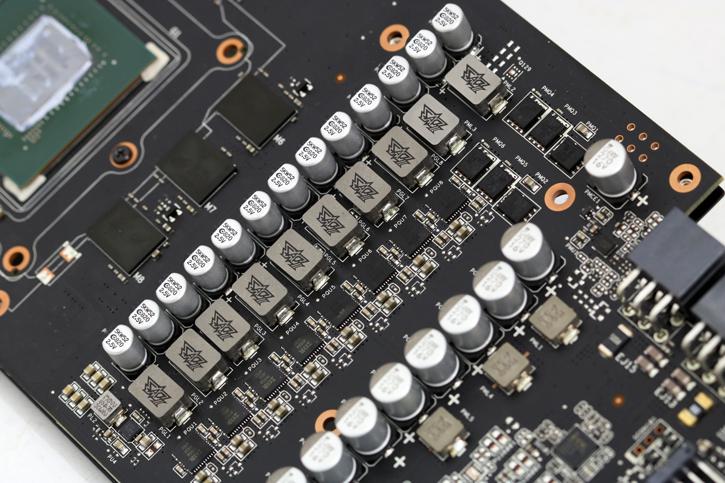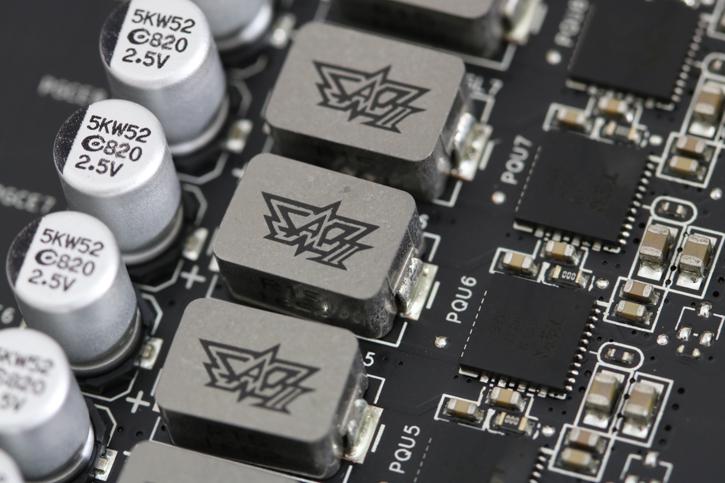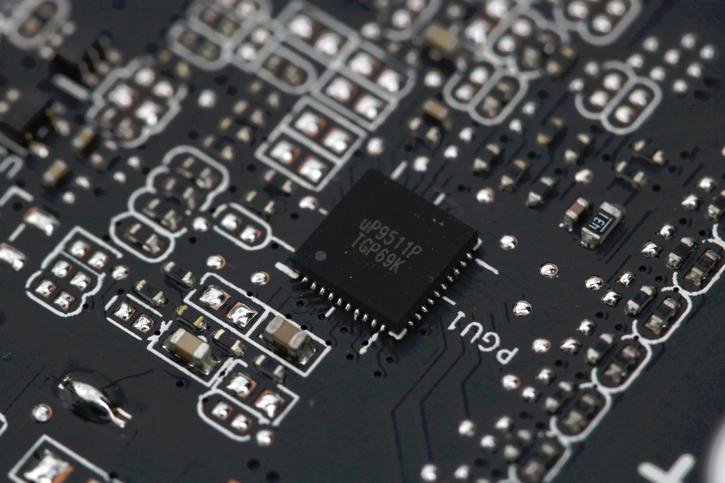Product Innards
Product Innards
So, we take off the back-plate locked in with screws. At the backside, there is a gap between the components and back-plate through the use of riser standoffs. Let's immediately zoom in.
Later in this review, you will see on the thermal image pages that the backside lights up extensively. Well, on the opposing side, as part of the VRM design ASUS makes use of POSCAPs, aka Conductive Polymer Tantalum Solid Capacitors. Since they have not been covered up by any heatsink/padding/whatever, these are the ones that light up and reach 85 Degrees C.
The cooling solution is impressive overall, it uses six heat-pipes that pass through a heatsink, with thermal paste tied to the all-copper yet nickel plated block. That's as good as it gets really, and sure, that shows in the great cooling performance.
When we flip the PCB it around you can also see that the critical components are covered with a full contact plate (padding underneath as well). The DrMOS integrated power stages have to pad and thus is cooled as well as most ICs.
With the heat plate removed we now have the full PCB visible. This is a very clean PCB design alright. Let's run through some of the components.
Here we have the GP104 graphics processor from Nvidia with its 2560 CUDA / Shader Cores
The GDDR5X memory chips are made by Micron and are specced to run at 11,000 MHz GDDR5 (effective data-rate). Tweaked, you are looking at a capacity of roughly 12,000 MHz (effective data-rate). These are Micron D9VRL rated at 11 Gbps / 1.35V, however, Micron also offers new 12 Gbps IC under the product name D9VRN.
You can count them, 10 phases. 8 for the and 2 memory power phases. We'll look at the voltage regulator as well.
Across the PCB you see a clean component layout which includes premium VRM components. From left to right we first stumble into 5K SAP capacitors (which offer a longer lifespan compared towards normal capacitors ). In the middle where it reads SAPII graffiti style, that is a molded inductor (chokes). These concrete alloy chokes help to decrease buzzing noises. And the square chips to the right are SAP MOSFETs, for ASUS they use DrMOS.
A uPI based uP9511P voltage regulator is a recent and much-used model voltage controller for many NVIDIA GP104 GPU based graphics cards. uP9511 can be configured in 8/7/6/5/4/3/2/1-phase operation and if you counted with me, there are 10 of them. We spotted two Up9511 phase doublers, hence, in this case, ASUS might be using Up9511 in a 5-phase configuration and using other UPI semiconductor uP1911R ICs as doublers to get their 8-phases for the GPU and then two to memory. This is common on many graphics cards.

